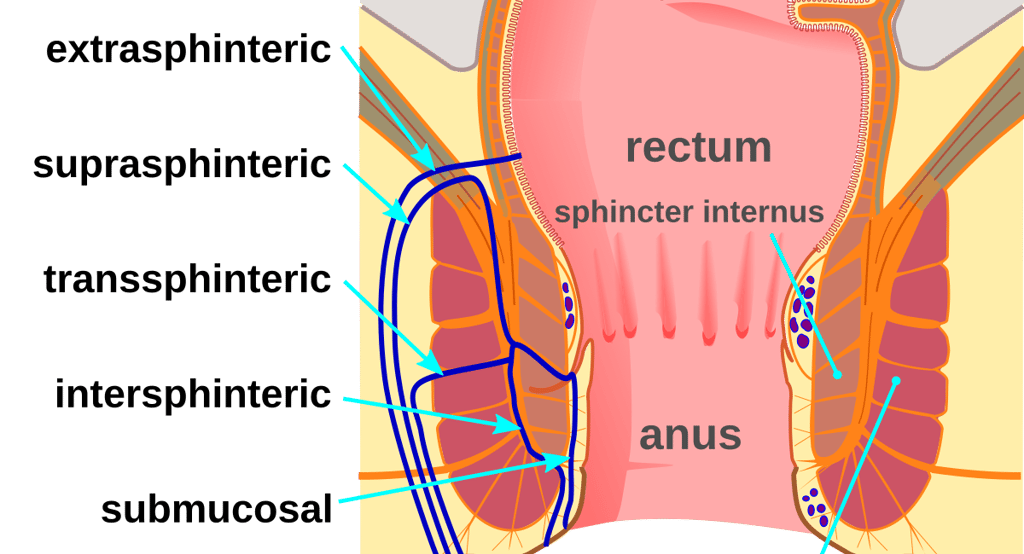Anal Fistula


An anal fistula is an abnormal tunnel that develops between the bowel and the skin near the outside of the anus, where stool (feces) comes out. The anus has many tiny glands that make lubricating fluid.
Sometimes, these glands become plugged and infected, and that can cause a fluid-filled pocket (abscess) to form. An anal fistula often develops after this infection or abscess.
CAUSES
In most cases, an anal fistula is caused by a past or current anal abscess. Other causes include:
• Trauma to the rectalarea.
• Radiation to thearea.
• Medical conditions or diseases, suchas:
◦Chronic inflammatory bowel disease, such as Crohn disease or ulcer ative colitis.
◦ Colon cancer or rectal cancer.
◦Diverticular disease, such asdiverticulitis.
◦ An STD (sexually transmitted disease), such as gonorrhea, chlamydia, orsyphilis.
◦An infection that is caused by HIV (human immuno deficiency virus).
◦ Foreign body in therectum.
SYMPTOMS
Symptoms of this condition include:
• Throbbing or constant pain that may be worse while you are sitting.
• Swelling or irritation around theanus.
• Drainage of pus or blood from an opening near the anus.
• Pain with bowelmovements.
• Fever orchills.
DIAGNOSIS
Your health care provider will examine the area to find the openings of the anal fistula and the fistula tract. The external opening of the anal fistula may be seen during a physical exam. You may also have tests, including:
• An exam of the rectal area with a gloved hand (digital rectal exam).
• An exam with a probe or scope to help locate the internal opening of the fistula.
•Imaging tests t find the exact location and path of the fistula. These tests may include X-rays, an ultrasound, a CT scan, or MRI. The path is made visible by a dye that is injected into the fistula opening.
You may have other tests to find the cause of the anal fistula.
TREATMENT
The most common treatment for an anal fistula is surgery. The type of surgery that is used will depend on where the fistula is located and how complex the fistula is. Surgical options include:
•A fistulotomy. The whole fistula is opened up, and the contents are drained to promote healing.
•Seton placement .A silk string(seton)is placed in to the fistu laduring a fistulotomy. This helps to drain any infection to promote healing.
• Advancement flap procedure. Tissue is removed from your rectum or the skin around the anus and is attached to the opening of the fistula.
•Bio prosthetic plug A cone-shape d plug is made from your tissue and is used to block the opening of the fistula.

ADDRESS
Rajeshwari Nagar, East Tambaram, Selaiyur, Near Camp Road Signal (Opp to Pantaloons) Chennai, Tamil Nadu 600059
+91 78717 54321
Mon - Sat 7:00 pm – 10.00 pm
Sunday: (On Appointment)
To schedule an appointment
BOOK ONLINE
or
call us at: +91 78717 54321
